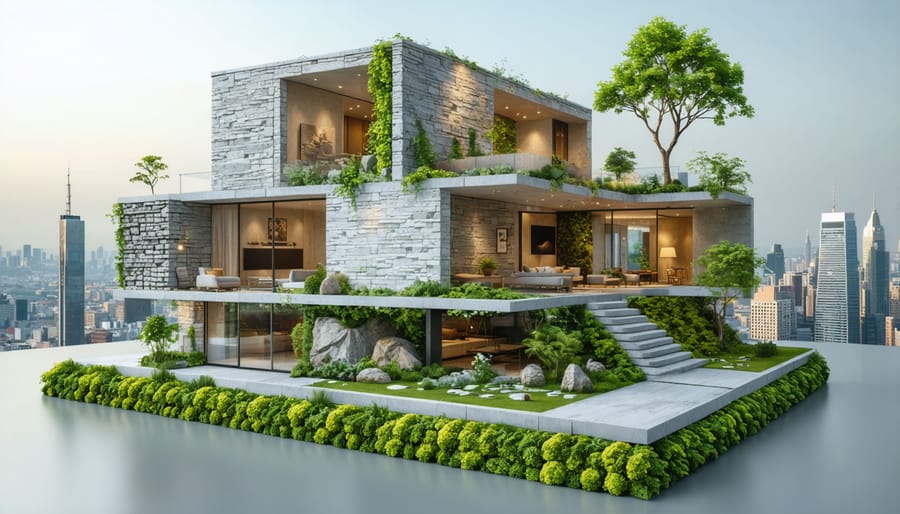Recycled Plastic Bricks
Recycled plastic bricks are an innovative building material that transforms plastic waste into durable, eco-friendly construction components. The production process involves collecting, sorting, and cleaning plastic waste before shredding it into small pieces. These plastic fragments are then mixed with additives and heated to create a homogeneous mixture that is molded into brick shapes and cooled. The resulting bricks are lightweight, strong, and resistant to moisture, insects, and extreme temperatures.
Using recycled plastic bricks in construction offers numerous benefits. By repurposing plastic waste, this material helps reduce the amount of plastic ending up in landfills and oceans. Plastic bricks also have a lower carbon footprint compared to traditional clay bricks, as they require less energy to produce and transport. Additionally, these bricks provide excellent thermal and acoustic insulation, contributing to energy-efficient buildings.
Recycled plastic bricks have various applications in the construction industry. They can be used for building walls, pavements, and even entire structures. In Colombia, Conceptos Plásticos has built houses for low-income families using interlocking plastic bricks made from recycled materials. In India, the PolyCare company has constructed toilets and sanitation facilities using recycled plastic bricks, improving hygiene and sanitation in rural areas. As more architects and builders recognize the potential of this sustainable material, recycled plastic bricks are poised to revolutionize the construction industry and contribute to a greener future.
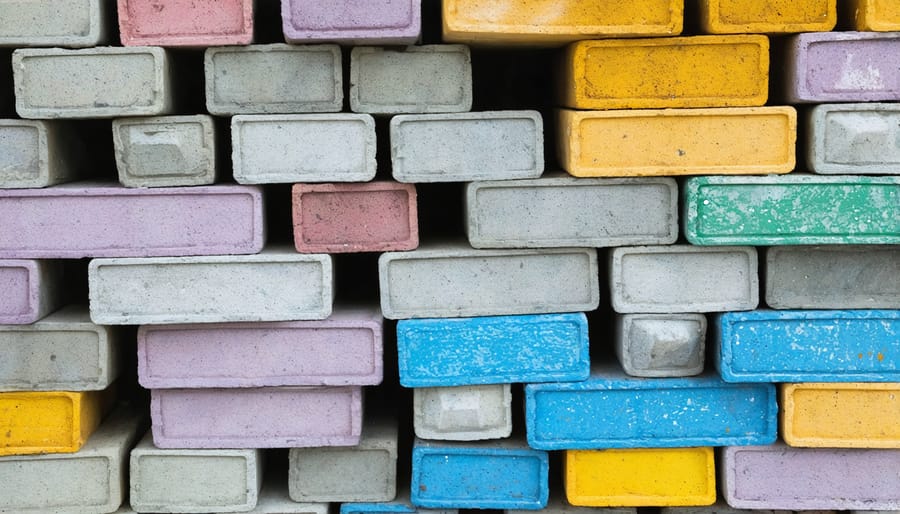
Hempcrete
Hempcrete, a composite material made from hemp shavings, lime, and water, is revolutionizing sustainable construction. This bio-based material boasts impressive thermal insulation properties, with an R-value of 2.5 per inch, surpassing traditional insulation materials. Hempcrete’s porous structure also provides excellent acoustic insulation, reducing noise transmission between rooms and from external sources. One of the most remarkable aspects of hempcrete is its carbon-negative impact. The hemp plant absorbs significant amounts of CO2 during its growth, and the lime in the mixture reabsorbs CO2 as it cures, effectively sequestering carbon within the building walls. Existing projects, such as the Marks and Spencer store in Cheshire Oaks, UK, demonstrate how sustainable construction techniques like hempcrete can be integrated to enhance modern design, reducing carbon footprints while also using innovative methods, such as digital transformation in construction.
Notable hempcrete projects include the Marks and Spencer store in Cheshire Oaks, UK, which features a 9-meter high hempcrete wall, and the EcoCocon modular homes in Slovakia, showcasing the material’s versatility in both commercial and residential applications. As the demand for sustainable building solutions grows, hempcrete is poised to play a significant role in shaping the future of eco-friendly construction, offering a durable, energy-efficient, and carbon-negative alternative to conventional materials.
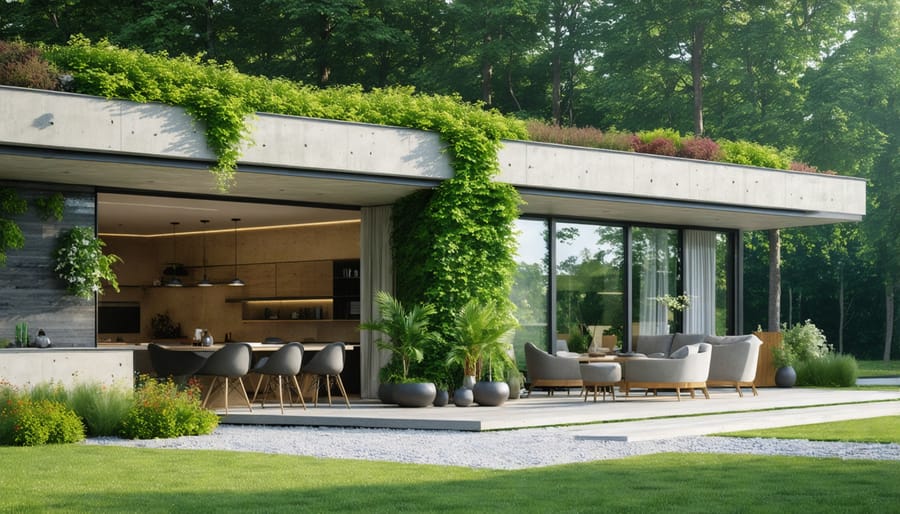
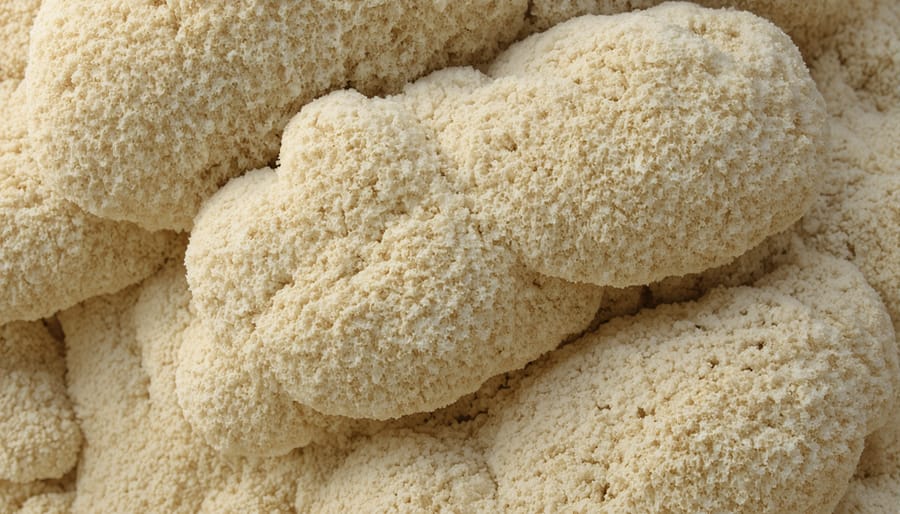
Mycelium Insulation
Mycelium, the vegetative part of fungi, has emerged as a promising sustainable insulation material. This natural, biodegradable substance is grown using organic waste materials, such as agricultural byproducts, in a controlled environment. The mycelium feeds on these waste materials, forming a dense, interwoven network of fibers. Once the desired density is achieved, the material is dried and treated to create a stable, fire-resistant insulation product.
Mycelium insulation offers several advantages over traditional synthetic materials. It has excellent thermal and acoustic insulation properties, helping to regulate indoor temperatures and reduce noise pollution. Additionally, mycelium is naturally resistant to moisture, pests, and mold, ensuring long-lasting performance without the need for harmful chemical treatments.
As a renewable and biodegradable material, mycelium insulation has the potential to significantly reduce the environmental impact of building construction. It can replace energy-intensive, non-biodegradable synthetic insulation materials, such as fiberglass and polystyrene foam. Moreover, the production process of mycelium insulation utilizes waste materials, contributing to a circular economy and minimizing the strain on natural resources, aligning with processes that emphasize circular economy in construction.
With its impressive insulative properties and eco-friendly attributes, mycelium insulation is gaining traction in the sustainable construction industry. As research and development continue, this innovative material is poised to revolutionize the way we insulate our buildings, offering a sustainable and effective alternative to traditional insulation options.
Ferrock Concrete
Ferrock, a promising alternative to traditional concrete, is revolutionizing the construction industry with its eco-friendly composition and superior performance. Made from recycled materials, including steel dust and silica from ground glass, Ferrock offers a sustainable solution without compromising on strength. In fact, Ferrock demonstrates up to 7 times the tensile strength of regular concrete, making it an ideal choice for a wide range of construction applications.
Not only does Ferrock utilize waste materials that would otherwise end up in landfills, but its production process also emits significantly less CO2 compared to traditional cement manufacturing. Moreover, Ferrock has the remarkable ability to absorb CO2 over time, further reducing its carbon footprint. As the material cures, it undergoes a unique chemical reaction that allows it to sequester carbon dioxide from the atmosphere, effectively becoming a carbon-negative building material.
With its impressive strength, lower environmental impact, and carbon-absorbing properties, Ferrock is poised to become a game-changer in the world of sustainable construction. As more architects, engineers, and builders recognize the potential of this innovative material, Ferrock is set to play a significant role in creating a more sustainable built environment for future generations.
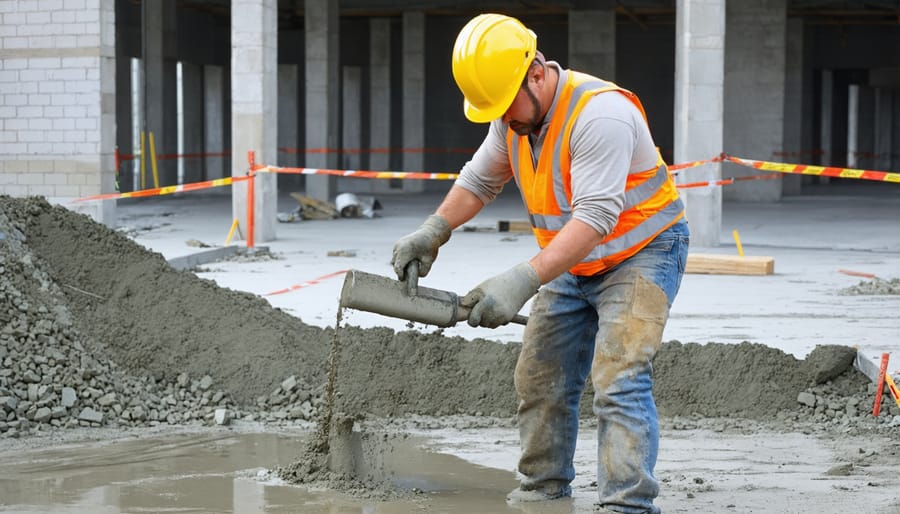
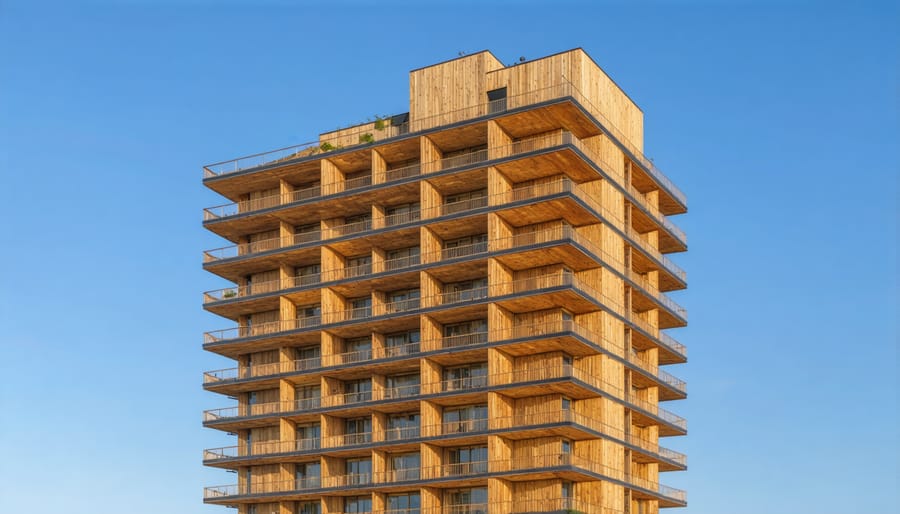
Cross-Laminated Timber (CLT)
Cross-laminated timber (CLT) is revolutionizing sustainable high-rise construction as an engineered wood product with exceptional structural properties. Manufactured by layering lumber boards crosswise and bonding them together, CLT panels offer remarkable strength and dimensional stability, making them suitable for load-bearing walls, floors, and roofs. This innovative material boasts a high strength-to-weight ratio, enabling the construction of taller structures while reducing the overall weight of the building.
One of the most impressive features of CLT is its inherent fire resistance. The cross-laminated structure of the panels allows them to maintain their structural integrity even when exposed to fire, as the outer layers char and protect the inner layers. This fire-resistant property enhances the safety of CLT buildings and meets stringent building code requirements.
Moreover, CLT significantly reduces construction time compared to traditional concrete and steel structures. The prefabricated panels are precisely manufactured off-site, allowing for rapid on-site assembly. This streamlined process minimizes waste, reduces labor costs, and expedites project completion. With its sustainable sourcing, carbon sequestration potential, and energy-efficient properties, CLT is poised to play a crucial role in shaping the future of green building design and construction, incorporating energy-efficient retrofits to further optimize building performance.
Bamboo
Bamboo, a rapidly renewable grass, has emerged as a game-changer in sustainable construction. With its impressive growth rate, reaching maturity in just 3-5 years, bamboo offers a sustainable alternative to slow-growing hardwoods. Its remarkable tensile strength, comparable to steel, makes it an ideal material for load-bearing structures. Bamboo’s versatility allows for diverse applications, from flooring and paneling to structural frames and scaffolding. Innovative architects are pushing the boundaries of bamboo construction, creating stunning, eco-friendly designs. Notable examples include the Green School in Bali, Indonesia, which features a campus of curving, open-air bamboo structures, and the Bamboo Pavilion in Zhejiang, China, showcasing the material’s potential for creating intricate, lattice-like forms. As the demand for sustainable building materials grows, bamboo is poised to play a crucial role in shaping the future of architecture. Its rapid renewability, strength, and adaptability make it a compelling choice for projects seeking to minimize environmental impact while achieving remarkable design. With proper harvesting and management practices, bamboo can contribute to the development of energy-positive buildings and help drive the construction industry towards a more sustainable future.
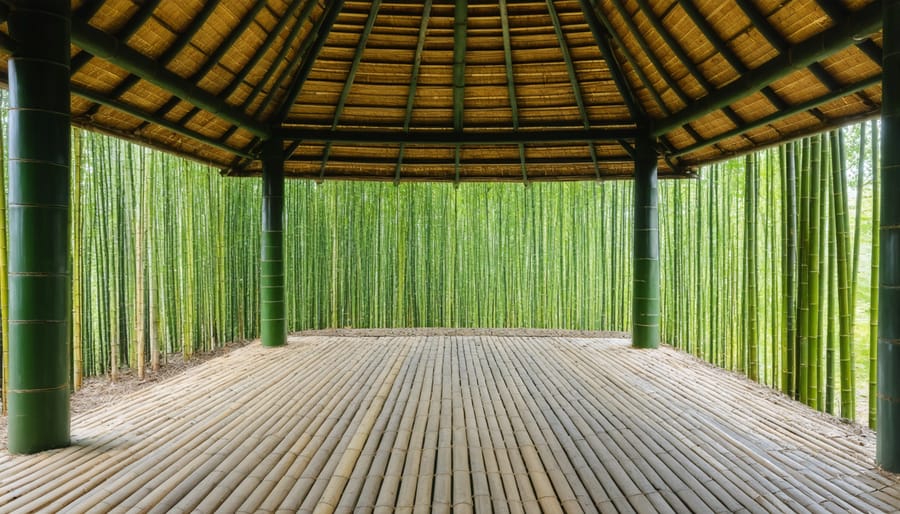
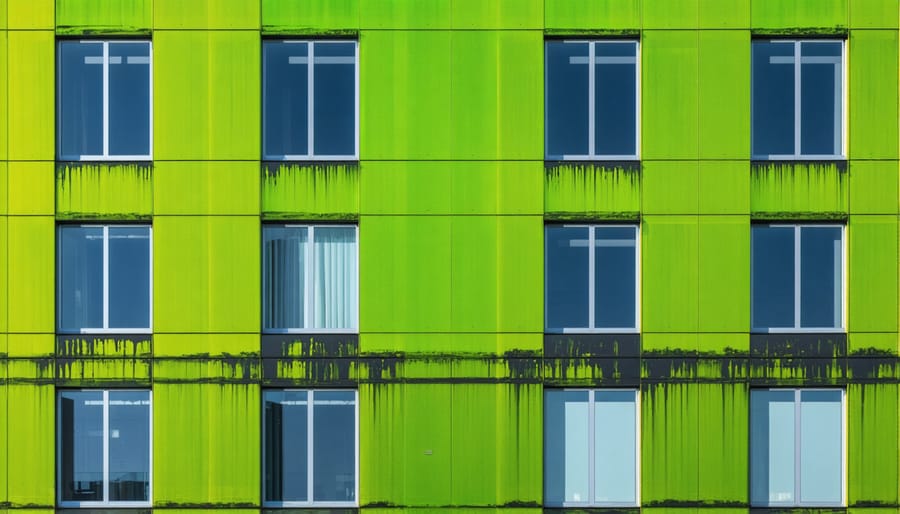
Algae-Powered Buildings
Algae facades are an innovative sustainable building material that harnesses the power of microalgae to generate renewable energy and provide thermal regulation for buildings. These living walls consist of transparent panels filled with algae, which absorb sunlight and CO2 to grow and produce biomass. The biomass is then harvested and processed into biofuel, creating a renewable energy source for the building.
In addition to energy production, algae facades offer thermal regulation properties. The algae’s natural photosynthetic process absorbs sunlight and heat, reducing the building’s cooling load during summer months. In winter, the facades act as an additional insulation layer, minimizing heat loss and reducing heating requirements. This dual functionality leads to significant energy savings and a reduced carbon footprint for the building.
The technology behind algae facades involves a closed-loop system that circulates water and nutrients to support algae growth. The transparent panels are designed to optimize sunlight exposure and maintain ideal growing conditions for the microalgae. As the algae multiply, excess biomass is regularly harvested and processed into biofuel, ensuring a continuous supply of renewable energy.
The potential for algae facades to create energy-positive buildings is immense. By generating more energy than they consume, these innovative structures can contribute to a net-zero or even net-positive energy balance. This not only reduces the building’s reliance on fossil fuels but also has the potential to feed excess energy back into the grid, benefiting the broader community.
As the construction industry seeks sustainable solutions, algae facades offer a promising avenue for creating green, energy-efficient buildings. With their ability to generate renewable energy, provide thermal regulation, and contribute to a circular economy, algae-powered buildings represent a significant step forward in the quest for sustainable urban development.
Conclusion
The innovative sustainable building materials covered in this article demonstrate the immense potential to revolutionize the construction industry and create a more eco-friendly built environment. From carbon-negative concrete and recycled plastic bricks to self-healing concrete and hemp-based insulation, these materials offer a wide range of benefits, including reduced carbon emissions, improved energy efficiency, and enhanced durability. As the demand for sustainable construction continues to grow, it is crucial for industry professionals to stay informed about these cutting-edge options and consider incorporating them into their projects. By embracing these innovative materials, architects, engineers, and project managers can not only contribute to a greener future but also position themselves as leaders in the field of sustainable construction. The case studies and expert insights provided in this article serve as a testament to the viability and effectiveness of these materials in real-world applications. As we move towards a more sustainable future, it is essential for the construction industry to adopt these innovative solutions and pave the way for a more environmentally responsible built environment.

